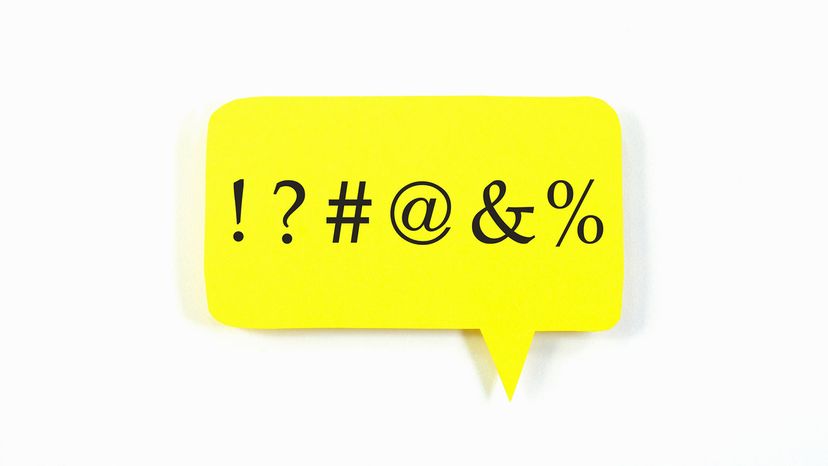
Image: jayk7/Getty Images
About This Quiz
Punctuation can really make or break a sentence. Test your knowledge of basic (and not-so-basic) punctuation conventions by taking this quiz!
Which of the following sentences is correct?
Its time for the movie.
The bird is looking for it's nest.
It's about time people learned how to use apostrophes!
"It's" is a short way to communicate "it is" or "it has." So, if you're having trouble figuring out whether or not to include the apostrophe, silently say the sentence with the extra word included. "Its" is one of those weird words that indicates possession, even though there's no apostrophe, so it's easy to see how that gets confusing.
True or false: Quotation marks can be used to emphasize part of a sentence, even if nothing is being quoted (for example: "One-stop Shopping" for All Your Automotive Needs!)
True: They add a nice emphasis.
False: If it's not an actual quote, don't use them.
Do not use either single or double quotation marks if the phrase in question isn't an actual quote. Instead, use italics or bold font to emphasize your point.
There's no hard-and-fast rule about that.
In American English, if a sentence ends in a quotation mark, where does the other punctuation go?
outside the quotation marks
inside the quotation marks
American English places punctuation marks inside the sentence-ending quotation marks. Here's an example: "This test is going to be impossible," said Mike. However, it's worth noting that British writers place the punctuation outside - and they use single quotes, too. Example: 'This test is going to be impossible', said Nigel.
The quotation marks function as the punctuation.
Advertisement
Now we have a trickier one: Which of the following sentences is correct?
Have you read "Little Women?"
Have you read "Little Women"?
Here, the quotation mark would go before the question mark, because the name of the book is "Little Women," not "Little Women?" But if the title had a question mark in it, then the punctuation mark would go outside: Have you read "Who's Afraid of Virginia Woolf?"
Either is correct.
When should you choose a semicolon instead of a comma in a sentence?
when the sentence includes two separate thoughts or clauses
Semicolons are used when you are trying to link two independent clauses: I need to go to the store; then I'm going to the bank. Commas are used when the two clauses are not independent: I need to go the store, then to the bank. BTW, you use a colon to introduce an item or a list of items.
when the sentence includes a list
when you're trying to place emphasis on one part of a sentence
Where does an Oxford comma go?
before the final "and" in a list
Some writing styles revere the Oxford comma (I'd like my sandwich with ham, turkey, and tomatoes), but others see it as unnecessary and therefore leave it off (ham, turkey and tomatoes). If you use it, place it before the final "and" in a list.
after the final "and" in a list
Nowhere. Oxford commas should never be used.
Advertisement
What's the purpose of an em dash?
to separate groups of words
to move on to a new train of thought
both of the above
The em dash is a horizontal line that is longer than a hyphen. While the hyphen combines two words to denote an idea (top-notch, big-time), the em dash can take a sentence into a slightly new direction: I love watching Netflix - but I'm considering switching to Hulu.
Which of the following shows correct comma usage?
My dog Flash, loves to chew on bones.
The dog enjoys eating napping, and chewing on bones.
Let's take the dog, who enjoys exercise, out for a walk.
Comma rules can be pretty confusing and technical. If you're not sure whether a sentence necessitates a comma, just think of it as a small pause. Does the pause help the sentence? If so, slap a comma in there.
When do you normally NOT use an ellipsis?
to separate two trains of thought
at the beginning of a sentence
A set of three periods, ellipses are often used to communicate that part of a quotation was left out or that a thought trailed off: The movie is playing here . . . never mind, it's sold out. Most style guides say you shouldn't use ellipses at the beginning of a sentence, even if you're omitting part of a quote.
to show part of a quote was omitted
Advertisement
If you wanted to include an interrobang in a sentence, how would you write it?
?!
Bet you didn't know there was a word for using a combination of a question mark and an exclamation point. The interrobang is used to ask a question in an excited way or to show befuddlement: Say what?! You've never seen that movie?!
!!
"?!?"
You Got:
/10
jayk7/Getty Images